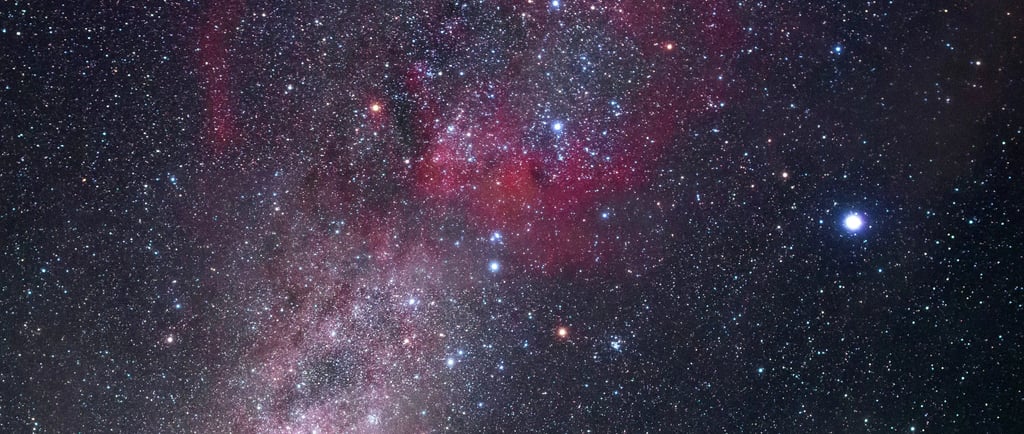The Gum Nebula


Introduction to the Gum Nebula
The Gum Nebula, an intriguing emission nebula, stretches itself impressively across 36° within the rich expanses of the southern constellations Vela and Puppis. Located approximately 450 parsecs (about 1,470 light-years) from Earth, this celestial phenomenon has captivated astronomers and stargazers alike.
The Nature of Emission Nebulae
An emission nebula is a vast cloud of gas and dust that becomes visible primarily due to the ionization of its particles by nearby hot stars. The glowing gas emits light, creating striking colors that help differentiate these celestial structures from surrounding space. The Gum Nebula, with its distinctive features, exemplifies the beauty of these regions. Its vast size and diffuse nature make it challenging to observe, often requiring advanced telescopic technology to discern its intricate details.
The Supernova Hypothesis
Astrophysical research suggests that the Gum Nebula is the remnant of a supernova that occurred approximately one million years ago. When a massive star exhausts its nuclear fuel, it undergoes a catastrophic explosion, sending shockwaves through the interstellar medium. This event not only results in the dispersion of stellar materials but also enriches the surrounding space with heavier elements, contributing to the formation of new stars. The remnants of the explosive event contribute to the intricate structure seen within the Gum Nebula today.
While the nebula lies within the Milky Way, it remains an elusive target for observational studies. Astronomers often utilize specific wavelengths of light, such as hydrogen-alpha, to analyze its structure more effectively. This research enhances our understanding of both the nebula and the supernova that birthed it, providing valuable insights into stellar evolution and the life cycle of stars.
As we continue to study the universe, the Gum Nebula stands out as a testament to the dynamic processes that shape our cosmos. By examining remnants of past supernovae like the Gum Nebula, we can further comprehend the complex interplay of stellar birth and death, and the role it plays in the vast tapestry of the universe.
